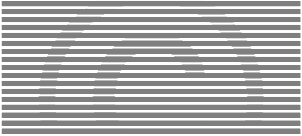Free Culture
By Lawrence Lessig

“property”
The copyright warriors are right: A copyright is a kind of property. It can be owned and sold, and the law protects against its theft. Ordinarily, the copyright owner gets to hold out for any price he wants. Markets reckon the supply and demand that partially determine the price she can get.
But in ordinary language, to call a copyright a “property” right is a bit misleading, for the property of copyright is an odd kind of property. Indeed, the very idea of property in any idea or any expression is very odd. I understand what I am taking when I take the picnic table you put in your backyard. I am taking a thing, the picnic table, and after I take it, you don’t have it. But what am I taking when I take the good idea you had to put a picnic table in the backyard—by, for example, going to Sears, buying a table, and putting it in my backyard? What is the thing I am taking then?
The point is not just about the thingness of picnic tables versus ideas, though that’s an important difference. The point instead is that in the ordinary case— indeed, in practically every case except for a narrow range of exceptions—ideas released to the world are free. I don’t take anything from you when I copy the way you dress—though I might seem weird if I did it every day, and especially weird if you are a woman. Instead, as Thomas Jefferson said (and as is especially true when I copy the way someone else dresses), “He who receives an idea from me, receives instruction himself without lessening mine; as he who lights his taper at mine, receives light without darkening me.” [1]
The exceptions to free use are ideas and expressions within the reach of the law of patent and copyright, and a few other domains that I won’t discuss here. Here the law says you can’t take my idea or expression without my permission: The law turns the intangible into property.
But how, and to what extent, and in what form—the details, in other words— matter. To get a good sense of how this practice of turning the intangible into property emerged, we need to place this “property” in its proper context. [2]
My strategy in doing this will be the same as my strategy in the preceding part. I offer four stories to help put the idea of “copyright material is property” in context. Where did the idea come from? What are its limits? How does it function in practice? After these stories, the significance of this true statement— “copyright material is property”— will be a bit more clear, and its implications will be revealed as quite different from the implications that the copyright warriors would have us draw.
 Continue...
Continue...![[Buy at Amazon]](http://images.amazon.com/images/P/0143034650.01.MZZZZZZZ.jpg)